What is a tunable white LED
A tunable white LED package is a multi-emitter device that integrates a minimum of two channels of individually controllable LEDs. Typically, the semiconductor package is a 2-in-1 assembly that combines warm white LEDs and cool white LEDs to enable tuning of the correlated color temperature (CCT) between chromaticity points of each primary color. There also may be 3-in-1 devices that additionally incorporates a neutral white LED primary such that the chromaticity coordinates can be set more precisely along the black body locus (the Planckian locus). Adjusting the amount of current delivered to each of the LED primaries will change the color mixing ratio and tune the overall CCT of an LED package. The CCT range of a tunable white LED package is defined the CCTs of LEDs at each end of the CCT range. In typical tunable white lighting applications, the warm white LEDs have a CCT usually around 2700 K and the cool white LEDs have a CCT usually around 6000 K.
Human centric lighting (HCL)
Tunable white lighting is the enabling technology of human centric lighting (HCL). HCL is the science of creating environmental cues for synchronizing human circadian rhythms to the light/dark cycles of the 24-hour day. It brings the dynamics of natural daylight into our living and working spaces, evoking particular human biological responses to support health, wellbeing, and performance. Light is a fundamental part of our life. Both the visual system and the biological system have evolved under a natural regime of daylight and darkness. The retina has developed photoreceptors that detect optical radiation for vision, physiological and psychological responses. Optical radiation reaching the retina not only enables humans to understand the physical universe, it also stimulates non-visual effects on human psychology and physiology. As humans spend the vast majority of their time working and living indoors, the impacts of artificial lighting on a range of neuroendocrine and neurobehavioral responses are hard to ignore.
Light is the pulse generator for the biological processes in our body
Arguably the most important and long-term effect of exposure to visible light is its ability to set the human biological clock which regulates the critical circadian rhythms. Circadian rhythms are endogenously generated biological processes such as sleep-wake cycles, body temperature, hormone secretion, blood pressure, cell regeneration, metabolism, digestion, gene expression, and glucose homeostasis. The human circadian system is organized in a hierarchical architecture under the control of the master clock located in the suprachiasmatic nucleus (SCN) of the hypothalamus. The SCN is the central pacemaker that drives, sustains and orchestrates rhythmicity in peripheral clocks via humoral, endocrine, or neural signals. The peripheral clocks, which are located in other tissues outside the SCN, e.g., in the liver, lung, muscle, skin, retina, kidney or cortex, exhibit self-sustaining circadian oscillations. In absence of circadian entrainment provided by the SCN they are not able to retain synchrony with the 24-hour external environment cycle. The SCN is capable of generating self-sustaining, endogenous oscillations with free-running period slightly longer than 24 hours. It is entrained to the 24-h light-dark cycle via the retinohypothalamic pathway to reset the free-running biological clock for the next 24 hours. The external entrainment in turn allows for internal synchronization of peripheral clocks.
Circadian disruption can affect human psychology and physiology
Maintaining a connection to nature as well as the sequential and phase-relation ordering of the various biological processes, from the molecular level to the behavioral level, is vitally important for coordinated function throughout the human body. Circadian disruption occurs when cellular clocks in peripheral organs are out of phase with the external environment or with each other. Numerous negative consequences can arise the naturally evolved rhythms are disrupted. They range from impaired cognitive, psychological and social performance to cardiovascular disorders, metabolic syndrome, thyroid dysfunction, gastrointestinal complications, cancer, diabetes and obesity. Many of these problems are associated with disturbance of sleep/wake cycles due to disrupted release of melatonin. The pineal hormone is the main internal synchronizer of the peripheral clocks with the master clock. It travels in the bloodstream throughout the body to relay information about time of day and seasons of the year. The SCN controls the release of melatonin, which in turn defines biological night. Nocturnal melatonin release contributes to a restorative sleep, promotes energy metabolism and tissue regeneration, and provides a vital protective mechanism that suppresses the growth of cancer cells in the body.
Circadian phototransduction
The SCN is regularly synchronized with the outside world through circadian phototransduction, a process that converts optical radiation information into neural signals. Although the classical photoreceptors (i.e., rods and cones) participate in this process, the photoreceptors that form the main conduit from the retina to the SCN are the intrinsically photosensitive retinal ganglion cells (ipRGCs). The ipRGCs integrate photic information from a large area of the retina and transmit it to the SCN via the retinohypothalamic tract (RHT). The ipRGCs’ photosensitivity starts with the activation of melanopsin receptors which have their highest sensitivity at the blue end of the spectrum (460-480 nm). Since the blue part of the spectrum is where the ipRGCs have the maximum sensitivity, optical radiation at this wavelength range is often referred to as bioactive blue light or biologically effective light. The action spectrum of the ipRGCs has been developed under the influence of the natural sequence of day and night. The circadian system takes cues from the ebb and flow of daylight and darkness. As the sun rises at dawn and descends at dusk, there are dynamic changes in the spectral composition and intensity of daylight. From morning to afternoon, a substantial portion of the daylight is in the 455–490 nm range. The blue-rich light suppresses melatonin during the day while enhancing dopamine, serotonin, and cortisol production to stimulate a daytime physiological response. The low level or absence of bioactive blue light during evenings and nights signals the brain to release melatonin, thus encouraging relaxation and supporting regeneration.
Control the bioactive blue dosage to synchronize the circadian rhythm
Dynamic and responsive, human centric lighting delivers a tunable spectrum of light that reproduces natural daylight. A spectrum of warm white light in a gentle ambiance gives people a soft start to the day and allows them to wind down at night. Optical radiation with a sufficient intensity and cooler color temperature elevates morning cortisol production to prepare the body for the coming day’s activity and stimulates the secretion of appropriate amounts of other hormones (e.g., dopamine, serotonin) during the day. It is predominantly the bioactive blue light that keep human biological processes and sleep/wake cycle in synch with a highly predictable, daily change in the environment. HCL systems supply an adequate amount of bioactive blue light at the right intensity and at the right time of day to change brain activation patterns to a more alert state, enhance psychomotor performance, improve muscle strength and coordination, increase cardiovascular efficiency, activate pupil constriction, etc., thereby adjusting the body to “daytime mode.” Equally important is that HCL defines the biological night by delivering blue-depleted warm white or warm amber light at sunset. In real life, maintaining nocturnal melatonin release and thus optimal circadian night functions is oftentimes the most important part of human centric lighting. Just as the ambiance from sunrise to sunset is dynamic, HCL responds to the changing needs of people and adapts lighting for every occasion and activity to support visual performance; address psychological needs with respect to the attractiveness, atmosphere and ambience of the environment; and facilitates the long-term health and wellbeing.
Tunable white lighting
Tunable white lighting technology is designed to provide a digitally controllable HCL solution. It enables independent control of both the color temperature and light intensity of a lighting system. The color changing (CCT tuning) aspect of lighting is at the heart of the technology. A standard continuously adjustable range of color temperatures from e.g., 1800 K to 6500 K provides an opportunity to explore biodynamic lighting and to fine tune a particular static color to satisfy individual needs. The ability to dynamically tune the spectrum of emitted light comes from adjusting the output ratio between LED emitters of different color temperatures through drive current regulation. At least two LED color channels (or primaries) are installed into a tunable white light. Each LED channel is individually dimmed through pulse-width modulation (PWM) or constant current reduction (CCR). A light controller, which is typically microcontroller-based, manages the color mixing ratio based on user input or digital instructions from software programs. The intersection of digital lighting and the Internet of Things (IoT) puts the value of human centric lighting in an ever-broadening context, making it adapt to the environment on a more individual level.
Additive color mixing
The foundational technology of tunable white lighting is LED-based additive color mixing. Additive color mixing is the creation of a secondary color by blending different primary colors. The arrival of LED technology not only allows the additive reproduction process to be performed in a lamp or luminaire, but also enables color tunability for an actively controllable spectrum. LEDs emit light through electroluminescence generated in a semiconductor-based light-emitting stack. The light-emitting stack is an n-GaN/InGaN/p-GaN heterojunction grown. When the p-n junction is biased in the forward direction, electrons in the n-junction flow cross the junction into the InGaN active region where they recombine with holes moving from the p-junction. The recombination leads to energy transitions in the electrons from the conduction band to the valence band. Light is produced as the electrons release excess energy. The quantum efficiency of such electroluminescence is very high in GaN-based semiconductor emitters, which makes it possible to create light sources with a footprint sufficiently small for fabricating small-size color-mixing modules. By manipulating semiconductor bandgap and controlling the composition of phosphor down-converter, an LED can be engineered to deliver a spectral power distribution (SPD) suited to a given color mixing application. LEDs have full, instantaneous dimmability, which makes it possible to produce predictable colors with PWM dimming of the individual component LEDs.
Package platform
The ability to mix LEDs with different CCTs in one package is a significant advantage. The integrated, multi-emitter design don’t just reduce the complexity of lighting system design, it also allows the wavelengths to be bunched together within human acuity limits and makes the different spectral channels indistinguishable even at close distances. A tunable white LED package is typically comprised of small phosphor-converted LEDs in different CCT combinations. A tunable white SMD LED generally comes with package architecture evolved from the plastic leaded chip carrier (PLCC) type of electronic packages. Two phosphor-converted LEDs are embedded in a polymer cavity and then filled with an encapsulant. Another common form is the chip-on-board (COB) package, which can accommodate a large array of discrete SMD packages. The component white LEDs of tunable white LED packages are often made with flip-chip LED dies which enable significantly reduced package size and thermal resistance.

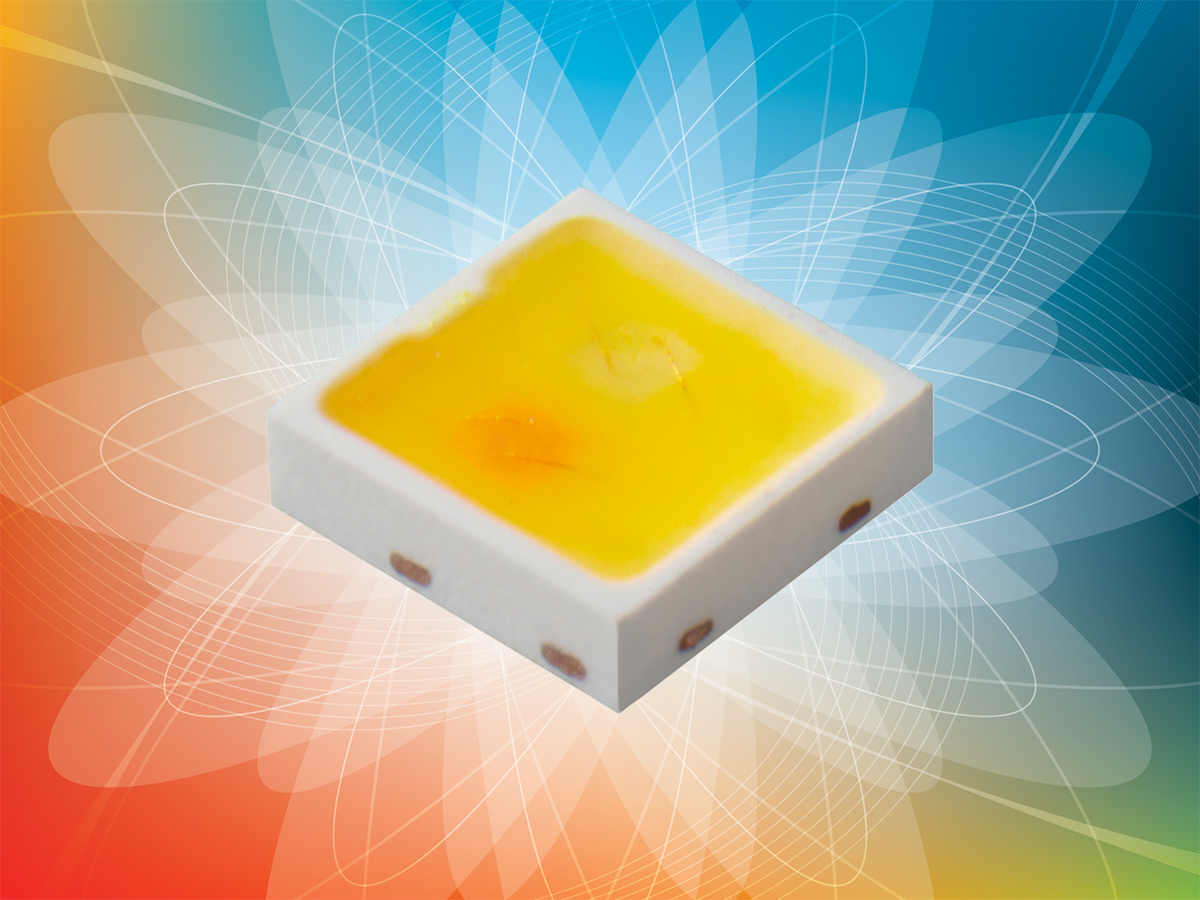

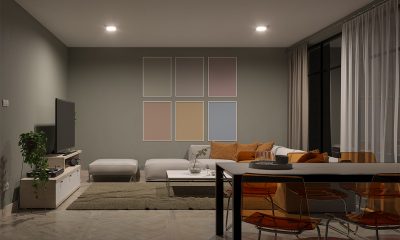

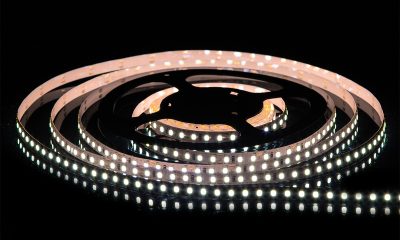


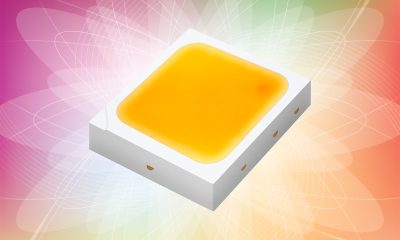
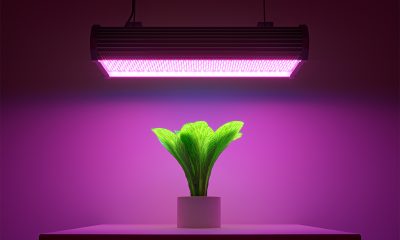


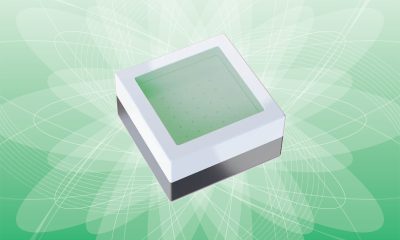
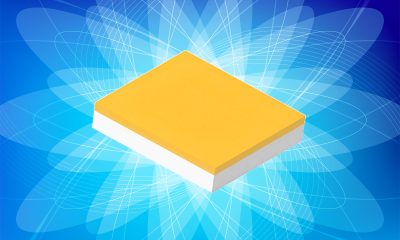





Loading...